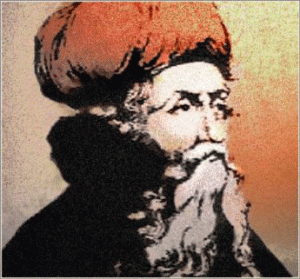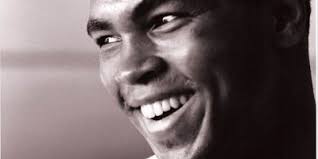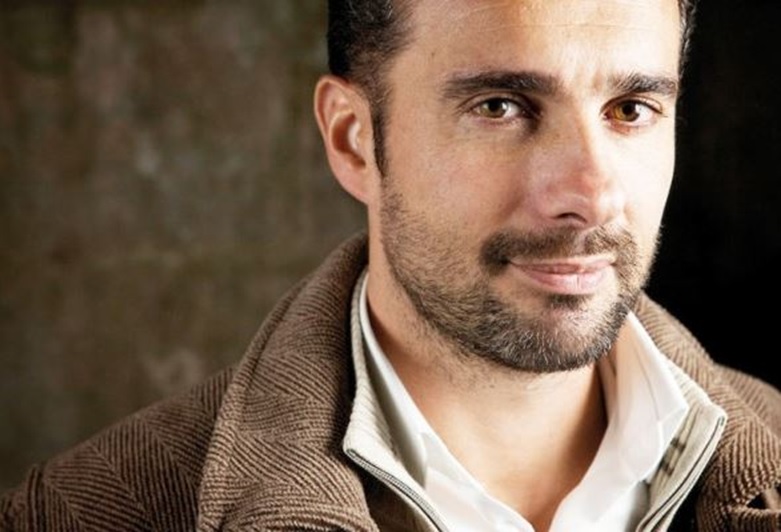James Winston Morris
 The aim of this essay is simply to point to certain guiding concerns and perspectives that are shared by both these artists, perspectives which are happily subsumed in the multifaceted Arabic technical term tahqīq or “realization” that was particularly favored by Ibn ‘Arabi and the long line of his later interpreters, or muhaqqiqūn. And in examining this subject, we can hopefully suggest something of the unique comprehensiveness and proven effectiveness of Rumi’s and Ibn ‘Arabi’s writings in supporting that wider human task of realization.
The aim of this essay is simply to point to certain guiding concerns and perspectives that are shared by both these artists, perspectives which are happily subsumed in the multifaceted Arabic technical term tahqīq or “realization” that was particularly favored by Ibn ‘Arabi and the long line of his later interpreters, or muhaqqiqūn. And in examining this subject, we can hopefully suggest something of the unique comprehensiveness and proven effectiveness of Rumi’s and Ibn ‘Arabi’s writings in supporting that wider human task of realization.
Let me start with a story. A year ago, at the Ibn ‘Arabi Society’s symposium in Berkeley, I was speaking of Ibn ‘Arabi’s far-reaching understanding of the implications of the central Qur’anic theme of divine and human “calling” and response, which is briefly summarized in the following brief excerpts from the Futūhāt (ch. 519):
… For all of Existence is God’s Words, and the “(divine) promptings that reach (our soul)” (wāridāt) are all of them messengers from God’s Presence. That is how they are experienced by the Knowers of and through God, since for them every speaker is nothing but God, and every saying is a (new) knowing of God…
Therefore everything that is changing and shifting in the world is a divine messenger, whatever that motion/change may be…
So the Knower looks for what is brought about through its motion/change, and from that he seeks to draw the benefit of a knowing that he did not have (before)…. So the whole world, for the Knower, is a messenger from God to him (or her). And that messenger and his message—I mean the whole world—with respect to that Knower, is a lovingmercy (rahma), because the messengers are only sent as a Lovingmercy.
Most of our discussion there, of course, involved the essential element of all tahqīq: eliciting and examining more closely the actual life-situations and experiences that alone make such grand metaphysical lessons—and their underlying complex of related Qur’anic verses, hadith and tradition—something “real” and actively transforming in each person’s life. One of the most revealing moments in that discussion was when an attentive listener objected: “I think I understand what he’s talking about, on the level of my daily life and experience—but what does the Shaykh mean by this insān kāmil (“complete Human Being”) or “Muhammadan Reality” that he was talking about?”: the latter being a familiar technical term and symbol referring to the cosmic reality he calls the “Messenger” or “Message” in the short passage I just quoted.
So I was wrestling in my mind with how to answer this question about the “haqīqa muhammadiyya”—a subject which would minimally require a whole lecture-hour of its own—when I suddenly realized that there was no real need to take this up at all. I realized that what really concerns Ibn ‘Arabi is our realization of the interplay of ethical and spiritual “Signs” and the challenges of our response in the course of everyday life—not the complex, now unfamiliar symbolic and scriptural terminology that was meant to help point his initial audiences back in that direction. For in its most basic terms, the process of tahqīq/tahaqquq, as it underlies the writings of both Rumi and Ibn ‘Arabi, can be described very simply. If we shift our focus from the realized state of the rare “Knowers” mentioned in the short passage quoted above to a more inclusive description, we can say that everyone’s life in this school of earthly existence is a dynamic cycle of lessons beginning with each day’s “Signs” and learning situations, moving on to our initial attentive reflections (tafakkur, in Qur’anic language), leading eventually either to illuminated insight (taʽaqqul, basīra) and awareness (maʽrifa) or to more problematic outcomes, all requiring active responses that themselves lead directly to new Signs and unfamiliar, challenging new learning situations.
As scholars, teachers, interpreters or performers of Rumi and Ibn ‘Arabi (or their peers), it is very easy to ignore, or to take for granted, the fundamental role in this process of realization of elements and actors that are simply “given” in the human situation, and which provide both the context and the motor for that entire process of realization. These elements of the human situation are all prior to the intervention of guides, writings, arts, rituals, religions, or any of the other limited cultural instruments that we tend to focus on as supposedly critical elements in this process of realization. Since the extraordinary trans-cultural and near-millenial influence and effectiveness of our two writers is surely connected to their remarkable artistic and rhetorical ability to engage the enormous spectrum of each of these “given” human elements of the process of tahqīq, it may help to start by listing some of the most important of those basic predestined elements (of taqdīr or qadar) in each person’s unique “personal equation” of realization:
(1) The diversity of character, personality types, etc. and their individual “karmic antecedents” (sawābiq, ‘ināya).
(2) The spectrum of relevant individual capacities and obstacles or “veils,” with regard to intellect, will, understanding, heart, motivation and so on.
(3) The range of available social and cultural “supportive resources” (spiritual pathways, guides, methods, etc.).
(4) The corresponding diversity of life’s lessons, challenges, difficulties and tests.
(5) The (initially mysterious or even arbitrary) interventions of “Grace,” of unexpected illumination and motivation—including above all the radically transforming power of Love, familiar to all of Rumi’s and Ibn ‘Arabi’s students.
Against that backdrop, it should be easier to recognize and acknowledge the very limited effectiveness of writings and other artistic tools and spiritual “methods”—or indeed even of experienced guides and devoted companions. Since our ego (or “basharic intellect,” in the language of these two authors) avidly recognizes for the most part, only what it already “knows”, and is only too readily sidetracked by imagination and other distractions, how can writings help us to go beyond that, to open up to and discover what our minds ordinarily refuse to even acknowledge?
If spiritual writings are often insufficient to get past the egoic mind, we can gratefully note the fundamental transformational role of music, or better yet, of dhikr in all its forms, in accomplishing what mere words cannot. And we might add to this how the contemporary multi-dimensional art of cinema often comes closest to recreating and serving the methods and intentions of both these artists.
But keeping our focus for now on the writings of these two authors, it is helpful—in order to appreciate the unique comprehensiveness of both Rumi and Ibn ‘Arabi—simply to identify the specific effective roles, in the vast process of realization, of some of the very different forms of earlier spiritual literature which are so constantly integrated in their works:
(1) Inspiring and motivating listeners in very different personal, dramatic testing situations (e.g., the role of stories, especially hagiographies and the like).
(2) Awakening the awareness of—and helping to avoid—hidden spiritual pitfalls and dangers.
(3) Contextualizing or situating where we are momentarily in the much larger path of realization (books on spiritual stages, “stations,” eschatology, and the like).
(4) Sensitizing and expanding our awareness of the inner and outward divine “Signs” and their implications, possible responses, and the engagements flowing from them.
(5) Reminding us of forgotten or neglected elements and factors in our own situation and challenges.
(6) Learning to effectively communicate and share the fruits of our own lessons and drama of realization.
(7) Guiding reflection and the search for understanding, and suggesting possible or unsuspected meanings.
(8) Helping to recognize and heal all the different “wounds” and misapprehensions arising throughout this process, where our failures are often the most memorable teacher.
(9) Acting as a spiritual “catalyst” in revealing (and supporting our ongoing engagement with) the inherent mystery of our actual realization of the meanings of our particular “Signs.”
For those unfamiliar with the historical background of our two authors and the literatures that had emerged by their time intended to fulfill these different roles, we might start by noting how nearly contemporary (and often geographically close) both men were, and as a result, how much they shared in terms of their wider educational background and profound familiarity with all the schools of Islamic thought and disciplines of spiritual guidance that had developed by their time—despite the obvious difference in their eventual languages of artistic expression, which in turn can make them seem so dramatically different in their effects and demands on readers approaching them today in English or other Western translations. The fact that one was a (uniquely hermetic) poet turned religious teacher, and the other a religious scholar turned poet should not obscure the deep common ground of reading, learning, and practical spiritual formation they both largely shared.
In any event, a comparison with the preceding Islamic literatures related to each of these above-mentioned spiritual functions—apart from the Qur’an itself—immediately highlights the very different ways that both these authors uniquely managed to maintain an inclusiveness and comprehensive presence of all these functions at the same time. (In that context, we cannot avoid at least mentioning here the equally impressive spiritual artistry of Hafiz of Shiraz, who was in so many ways the perfect synthesis of both Rumi and Ibn ‘Arabi.)
The result of that compression of all these spiritual functions is that their writing in many ways mirrors the actual presence of a living spiritual master. The comprehensiveness of their writings touches the existential dimension of the process of realization in each of their readers or listeners—and in ways that can make these texts often seem entirely “new” at each re-reading, because we ourselves are “tuned in” to different forms and issues of realization at each point in our lives. Without that point of direct engagement with the dramatic process of realization in each reader, writings with any of the above-mentioned spiritual purposes (whether drawn from Islamic or any other historical context) can understandably seem remote, theoretical, abstract, artificially systematic, idiosyncratic, or simply boringly “pedagogical”. But these writings engage the sirr al-qadar, the “unsolved mystery-novel of each soul’s ultimate destiny.”
But none of this need remain mysterious or academic: it suffices to sit down regularly and begin to read and discuss either author, together with a small interested and committed group of seekers, over the years: there all these varied effects and influences will quickly become clear in their visible and lasting impact on other participants, which is often easier to perceive than in one’s own life….
* * *
So where do we find ourselves, in the midst of this? And where do we turn? As each of these authors constantly reminds us, there are three inseparable dimensions of each soul’s spiraling miʽrāj of realization: knowledge (‘ilm), action (‘amal), and the mysterious power of love, that inner seeking and determination that makes both possible and keeps them alive in midst of even the most painfully evident futility and incompletion.
The long concluding section of Rumi’s Masnavi—two contrasting accounts of three highly symbolic “brothers” (which we must conflate here)—provides a richly memorable version of Plato’s unforgettable image in the Phaedrus of the spirit’s heavenly ascension drawn by the two winged steeds of the soul and intellect (nafs and ‘aql). As in the Masnavi’s opening tale of the King and his earthly beloved, Rumi concludes here with another dramatization of three different human approaches to life’s intrinsic suffering, and to the tragic futility and incompletion of earthly love. Together, all the preceding books of this Masnavi demonstrate how these three perspectives should rightfully work together. His unifying theme here is the contrast of divine and human “cunning” (makar) in responding to all the challenges and insecurities of life’s challenges of realization. The first two princes here are emblematic of two inescapable—but one-sided and profoundly short-sighted—“tricks” we all use, at various times, to try to avoid or short-circuit the inherent sufferings, transformations, and uncertainties of love: two attempts to penetrate the “mystery of destiny” (sirr al-qadr), to “solve” the apparent injustice of suffering without the time, endurance, and inner attentiveness, quickness and active searching that are bound together in the untranslatable Qur’anic expression of sabr.
Thus the oldest prince boldly chooses a “voluntary death,” a passionate sacrifice to Love—in which he is momentarily redeemed by the King, but without any recourse to the human intellect (‘aql and ‘ilm), or to the soul’s transforming work of creating and discovering beauty and good (ihsān), which always depends on sabr. In Rumi’s final summation or testament (wasiya) at the end of the Masnavī (Book 6), this prince is the unreflective, simple brother who simply relies on what is properly “said” and believed. But Rumi’s own response to his choice is two long illustrations of divine “cunning” indicating that there is no substitute, in the path of realization, for all the painful tests and revelations of desire and its concomitant suffering.
In contrast, the middle brother—somewhat like the younger, pre-Shams Rumi—is a devoted master of our (necessarily very partial) intellect and its accumulated worldly “knowledge,” happily finding refuge in the royal company and patronage. But without the humbling role of love and the sabr it requires of us, he is inevitably the victim of pride, pretension and self-delusion, so that he must die and start all over. In the Masnavi’s final conclusion, he is the second brother who takes his time and cautiously digs deeply, but in the end still relies on what is “said” (in this case, by his mother!).
The third, almost invisible and (ironically) “lazy” brother—the embodiment of the goal of humble ego-surrender to God’s Will (nīstī)—is the one who lets the Real act and teach (the interrelated ultimate human perfections of taslīm, tawakkul, ridā, and sabr), who allows both steeds, both love and the purified intellect (‘ishq and ‘aql), to be guided by the Spirit’s charioteer, leading through the purification and illumination of suffering to divine Guidance and Wisdom. Paradoxically, through sabr rather than sacrifice, he is also the brother whose realization is complete, who wins the ultimate Prize of both the “form” and the spiritual “meaning” of life (sūrat and maʽnā).
These are Rumi’s last words and testament, at the very end of the Masnavi, asking paradoxically: How do we ever know “God’s Side”?—when all sides of love (as he began in the opening story) necessarily lead to Him. They are really the same as Ibn ‘Arabi’s dense words about the true “Knowers” with which we began, keeping in mind that the Beloved before whom we sit is in reality every facet we daily encounter of the ever-renewed Gift of creation:
I sit before Him in silence.
I make sabr a ladder toward the ascending stairs of heaven
so that sabr brings the key to bliss.
So if, in His Presence, there should burst forth from my heart
a communion (mantiq: the soul’s shared silent Word), beyond this joy and sadness
I KNOW that He has sent that to me
from the innermost self (damīr), like Suheyl illuminating Yemen.
In my heart, that Word is from that auspicious Side
because there is a window between Heart and Heart!





